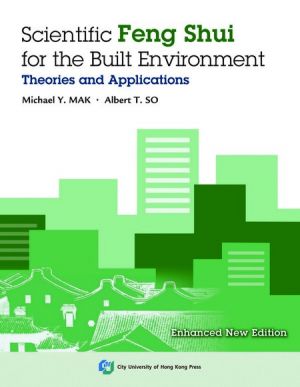Research in Scientific Feng Shui and the Built Environment
HKD180.00
In stock
Feng Shui practice has become an important reference for the planning and design of buildings, monuments and even entire cities. In fact Feng Shui is an evolved study of the natural and built environment. By utilizing the natural elements and practical environmental changes, we may improve upon our well-being, relationships, prosperity, health and living environment. People in many advanced countries seek to establish a deeper understanding of these relationships between human and natural environment. Architects from around the world also begin to recognize Feng Shui as a broad ecologically and architecturally connected paradigm.
To remove the shadow of superstition for Feng Shui practice, it is essential to use a scientific approach in the hope of combining and fusing ancient wisdom with modern knowledge in building science. Scientific Feng Shui has two meanings, namely (1) the verification of Feng Shui principles scientifically and (2) studying Feng Shui logically in a scientific way. This volume comprises 13 high-quality essays which were well-organized into four parts to reflect the current trends and the future development of the research undertaken in the built environment. The two core schools of Feng Shui, i.e., the Compass school and the Form school, were introduced in Part I and Part II as a primer to the understanding of the subject. In Part III and Part IV, a detailed account in researching the relationship between Feng Shui and the built environment was given in a case study approach with examples in Japan and China to illustrate the concepts comprehensible to general readers. An introductory chapter in a systematic approach will give readers a better understanding of some basic and valuable knowledge towards Feng Shui practice.
This book will address the growing demand for architects, building professionals and other property practitioners to apply the concepts of Feng Shui in built environment.
ISBN
978-962-937-172-2
Pub. Date
Feb 1, 2009
Weight
1kg
Paperback
304 pages
Dimension
152 x
229 mm
Subjects
Feng Shui, the ancient Chinese wisdom, is now quite well-received around the world. However, there is a lot of misunderstanding and confusion about Feng Shui. If you search the keywords Feng Shuithrough the internet, you will found tens of thousands of we
Feng Shui, the ancient Chinese wisdom, is now quite well-received around the world. However, there is a lot of misunderstanding and confusion about Feng Shui. If you search the keywords Feng Shuithrough the internet, you will found tens of thousands of websites related to the topic, but many of them are actually promoting superstition. Some people think that by placing a charm in a certain area that they are practicing Feng Shui. Or some would say Feng Shui is simply a study of astrology. This is not so. Feng Shui is an evolved study of the natural and built environments. Utilizing the natural elements and practical environmental changes, people can improve upon their well being, relationships, prosperity, health, and living environment.
To bring the study of Feng Shui beyond the shadow of superstition, it is essential to use scientific approach in studying Feng Shui. Scientific Feng Shui has two meanings, namely the verification of Feng Shui principles scientifically or studying Feng Shui logically in a scientific way. The first international symposium on scientific Feng Shui and built environment was held in the City University of Hong Kong in October 2005. Subsequently, the second and third international conferences were successfully completed in 2006 and 2007 in Hong Kong as well. These conferences were well attended by speakers and participants from five continents, including Asia, Europe, Australasia, North and South America. The aims of the conference are to provide an international platform to exchange scientific researches in Feng Shui and the built environment. In order to extend to the worldwide research communities in Feng Shui and the built environment, thirteen high-quality papers are selected from the past three years conference proceedings are compiled in this book. These papers are categorized into four parts: research in Compass school, research in Form school, research in cities and villages design, and future of research in Feng Shui and the built environment. We wish this book can provide a platform for advancement of research in scientific Feng Shui and the built environment, and eventually Feng Shui knowledge may serve as the foundation for a new field of science in the built environment.
To bring the study of Feng Shui beyond the shadow of superstition, it is essential to use scientific approach in studying Feng Shui. Scientific Feng Shui has two meanings, namely the verification of Feng Shui principles scientifically or studying Feng Shui logically in a scientific way. The first international symposium on scientific Feng Shui and built environment was held in the City University of Hong Kong in October 2005. Subsequently, the second and third international conferences were successfully completed in 2006 and 2007 in Hong Kong as well. These conferences were well attended by speakers and participants from five continents, including Asia, Europe, Australasia, North and South America. The aims of the conference are to provide an international platform to exchange scientific researches in Feng Shui and the built environment. In order to extend to the worldwide research communities in Feng Shui and the built environment, thirteen high-quality papers are selected from the past three years conference proceedings are compiled in this book. These papers are categorized into four parts: research in Compass school, research in Form school, research in cities and villages design, and future of research in Feng Shui and the built environment. We wish this book can provide a platform for advancement of research in scientific Feng Shui and the built environment, and eventually Feng Shui knowledge may serve as the foundation for a new field of science in the built environment.


